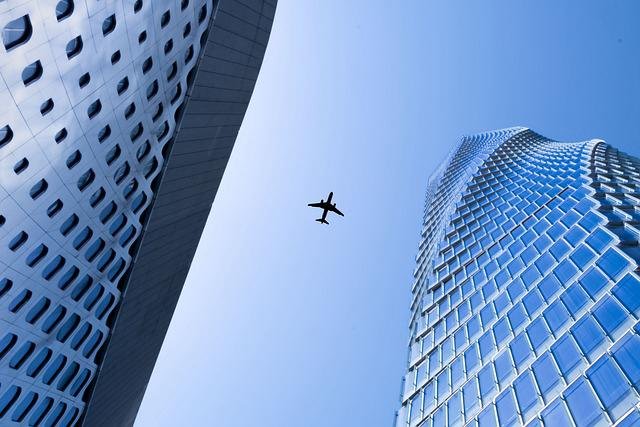In our contemporary society, air travel has seamlessly woven itself into the fabric of our lives, acting as a nexus that connects people and places in unprecedented ways. Behind the awe-inspiring experience of gliding through the skies, a sophisticated network of technology and engineering stands as the foundation, facilitating this extraordinary feat. Aircraft stand as testaments to human ingenuity, with their various components serving indispensable roles in ensuring safe and efficient travel. The following sections delve into six essential facts about the diverse components that collectively contribute to keeping aircraft airborne.
- Wings: The Core of Flight
Wings serve as the defining characteristic of any aircraft, their design a product of intricate engineering. The dimensions and contours of wings are pivotal in determining an aircraft’s lift and drag, critical factors for initiating and sustaining flight.
Modern aircraft often integrate advanced materials like carbon fiber into their wings, combining strength with lightness. Additionally, wings may incorporate sophisticated systems, such as winglets, designed to enhance fuel efficiency and mitigate turbulence.
- Engines: Propelling the Skies Forward
Aircraft engines function as the dynamic force propelling an aircraft through the air. Jet engines, predominant in commercial aviation, operate by drawing in air, compressing it, blending it with fuel, and igniting the mixture to generate thrust.
Turboprop engines, commonly found in smaller aircraft, employ a hybrid of jet propulsion and a traditional propeller system. Ongoing advancements in engine technology focus on achieving heightened fuel efficiency, reduced emissions, and quieter operation.
- Avionics: The Intellectual Hub of Aircraft
Avionics, derived from aviation and electronics, encompass the electronic systems within an aircraft, playing a pivotal role in modern aviation. These systems extend beyond navigation, communication, radar, and autopilot functions to include critical safety features like collision avoidance systems and weather monitoring equipment.
Modern aircraft rely extensively on avionics for precise navigation and communication, ensuring not only safe but also efficient travel. The continuous evolution of avionics technology has given rise to advanced fly-by-wire systems, where electronic signals seamlessly replace traditional mechanical controls, resulting in a paradigm shift towards enhanced precision, responsiveness, and overall flight control sophistication.
- Landing Gear: Connecting the Sky and Earth Safely
Beyond wings and engines, the safe execution of takeoffs and landings hinges on the reliability of the landing gear. This assembly, comprising wheels, struts, and shock absorbers, enables the aircraft to taxi on the ground and execute smooth takeoffs and landings.
The aircraft tire cage is a critical safety feature that ensures the secure containment of tires, preventing potential hazards and contributing to the overall safety of aircraft operations. The configuration of landing gear varies depending on the aircraft type, ranging from simple setups for smaller planes to intricate retractable systems for larger commercial aircraft.
Some military aircraft even feature specialized landing gear for short takeoffs and landings. The aircraft tire cage is a critical safety feature that ensures the secure containment of tires, preventing potential hazards and contributing to the overall safety of aircraft operations.
- Fuselage: Abode for Passengers and Cargo
The fuselage serves as the primary body of the aircraft, housing the cockpit, passengers, and cargo. Fabricated from lightweight yet robust materials such as aluminum or composites, the fuselage is designed to endure the structural stresses inherent in flight.
The design of the fuselage is pivotal for aerodynamics, significantly influencing the overall efficiency of the aircraft. Additionally, the fuselage accommodates various systems, including fuel tanks and ventilation.
Its design not only ensures structural integrity but also considers passenger comfort, safety regulations, and the strategic placement of crucial systems, making the fuselage a multifaceted component essential to the aircraft’s seamless operation.
- Tail Section: Upholding Stability in Flight
The tail section, encompassing the horizontal stabilizer and vertical fin, assumes a critical role in maintaining the stability and control of the aircraft. The vertical fin counteracts undesired yawing motion, while the horizontal stabilizer contributes to balancing the aircraft and controlling its pitch.
The rudder, affixed to the vertical fin, provides the pilot with the capability to navigate the aircraft in either a leftward or rightward direction. The tail section emerges as a crucial component in ensuring a seamless and controlled flight, particularly during takeoff and landing maneuvers.
Conclusion
As you gaze in awe at aircraft gracefully traversing the skies, it is imperative to acknowledge the intricate engineering that underpins their design and construction. The components explored in this article represent merely a fraction of the myriad parts that synergize to enable flight. From wings lifting you into the air to engines propelling your journey and avionics guiding you, each component assumes a unique and indispensable role. The next time you step aboard an aircraft, take a moment to reflect on the marvels of technology and engineering collaborating to keep you aloft en route to new horizons.
